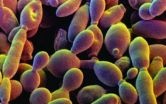New report on creating clinical public use microdata files
Canadian Research Chair in E-Health encourages broader data sharing
2011-09-16
(Press-News.org) OTTAWA, ON – September 15, 2011 – The demand for transparency through publicly available healthcare data is on the rise. This is the case for administrative and clinical data for research, and for clinical trials data used to support new drug approvals. Broad data access has a measurable impact on research and policy making. A new report by Dr. Khaled El Emam, the Canada Research Chair in Electronic Health Information at the University of Ottawa and the Children's Hospital of Eastern Ontario Research Institute, looks at the creation of clinical public use microdata files (PUMFs).
"We have shown how to create useful clinical public data files while providing strong protections for the privacy of individuals," explained Dr. El Emam. "The U.S. and the U.K., as well as other countries are steering an international debate right now about open data, and are leading the way in providing access to detailed health information. But there are very few organizations in Canada, all sitting on gold mines of data, which have made that data publicly available. More Canadian agencies need to step up!" The report demonstrates that making the data anonymous is possible and doing so does not put patient privacy at risk.
A PUMF can serve multiple purposes, including: confirming published results, providing broader feedback to improve data quality, use it for training students and fellows in data analysis, providing an easily accessible data set for researchers to design studies, examine the feasibility of certain studies, and prepare for analyses on more detailed data that are not publicly available, and be used as a large data set for computer scientists and statisticians to evaluate analysis and data mining techniques.
The report, available today in the BMC Medical Informatics and Decision Making Journal, looked at a random sample of individual-level data files; part of the discharge abstract database from the Canadian Institute for Health Information (CIHI). Two different PUMFs were produced; one with geographic information and another without geographic information but containing more clinical information. The findings were clear – the PUMFs ensured that the risk of re-identifying individual patients was very low and after the changes made to the data to protect patient identity the data was still useful for analysis.
To create the PUMF, the paper describes new metrics for measuring re-identification risks; develops a new efficient algorithm for minimizing the amount of information that needs to be removed from the data; explores the different plausible ways that Canadians' health data can be attacked; and demonstrates tactics that can be used to maximize the value of the data that is released. The report provides an example of the steps that need to be followed to create a PUMF.
"Canada has a single payer system, which means that population-level data sets already exist. Currently gaining access to such data is often limited to certain groups, is complex and time-consuming," said Dr. El Emam. "Making data public is not difficult to do; data quality can be maintained; and the economic and health system benefits are substantial! Worries about privacy are simply not a convincing excuse anymore as it's largely a solvable problem."
INFORMATION:
Link to report: http://www.biomedcentral.com/1472-6947/11/53/abstract
About Dr. Khaled El Emam:
Dr. El Emam, Associate Professor, Faculty of Medicine and the School of Information Technology and Engineering, University of Ottawa, is a senior scientist and Principal Investigator at the Electronic Health Information Laboratory at the CHEO Research Institute.
About the CHEO Research Institute: Established in 1984, the CHEO Research Institute coordinates the research activities of the Children's Hospital of Eastern Ontario (CHEO) and is one of the institutes associated with the University of Ottawa Teaching Hospitals. The Research Institute brings together health professionals from within CHEO to share their efforts in solving paediatric health problems. It also promotes collaborative research outside the hospital with partners from the immediate community, industry and the international scientific world.
END
ELSE PRESS RELEASES FROM THIS DATE:
2011-09-16
Fires have continuously occurred on Earth for at least the last 400 million years. But since the 1970s, the frequency of wildfires has increased at least four-fold, and the total size of burn areas has increased at least six-fold in the western United States alone. Steadily rising, the U.S.'s bill for fighting wildfires now totals $1.5 billion per year.
How much of the increases in the frequency and size of fires are due to human activities? No one knows for sure. But a paper in this week's issue of the Journal of Biogeography puts the role of fire in natural ecosystems ...
2011-09-16
The Carlsbad Department of Development (CDOD) recently welcomed Secretary Celina Bussey of the New Mexico Department of Workforce Solutions to Carlsbad. Carlsbad and Eddy County, New Mexico, are looking for ways to attract workers for the plethora of jobs currently available. Secretary Bussey and her staff met with CDOD officials, community leaders, business owners, and New Mexico State Representatives Bill Gray and Cathrynn Brown to hear their needs and offer solutions.
The unemployment rate in Carlsbad, which has never risen above 6.6% in the last five years, has been ...
2011-09-16
Fungi found in the leaves and trunks of wild Peruvian cacao trees offer the potential for biological control of cacao diseases such as witches' broom disease, according to U.S. Department of Agriculture (USDA) scientists. Several of the fungal species were previously unknown to science.
Agricultural Research Service (ARS) researchers at the agency's Sustainable Perennial Crops Laboratory (SPCL) and Systematic Mycology and Microbiology Laboratory (SMML) in Beltsville, Md., and Peruvian collaborators conducted cacao collection expeditions in 2008 and 2009 through the Amazon ...
2011-09-16
SEATTLE, WASH. — September 15, 2011 — The Allen Institute for Brain Science announced today the discovery of a new class of cells in the spinal cord that act like neural stem cells, offering a fresh avenue in the search for therapies to treat spinal cord injury and disease. The published collaborative study, authored by scientists from the University of British Columbia, the Allen Institute for Brain Science and The Montreal Neurological Institute and Hospital at McGill University and titled "Adult Spinal Cord Radial Glia Display a Unique Progenitor Phenotype," appears ...
2011-09-16
A new paper by a team of University of Notre Dame researchers that included Shahriar Mobashery, Jeffrey Peng, Brian Baker and their researchers Oleg Borbulevych, Malika Kumararasiri, Brian Wilson, Leticia Llarrull, Mijoon Lee, Dusan Hesek and Qicun Shi describes a unique process that is central to induction of antibiotic resistance in the problematic bacterium methicillin-resistant Staphylococcus aureus (MRRA).
MRSA first emerged in the United Kingdom in 1961and spread rapidly across the globe. Modern strains of MRSA are broadly resistant to antibiotics of various classes, ...
2011-09-16
Scientists have replaced all of the DNA in the arm of a yeast chromosome with computer-designed, synthetically produced DNA that is structurally distinct from its original DNA to produce a healthy yeast cell. (Yeast chromosomes are often depicted as bow tie-shaped--with each chromosome bearing two "arms" that are positioned similarly to the two sides of a bow tie.)
These results confirm that large pieces of DNA can be synthesized and inserted into a chromosome, and validate the research team's principles for designing synthetic chromosomes. Further, the researchers report ...
2011-09-16
Lyme disease is a dangerous disease which is transmitted by ticks. Blood-sucking ticks ingest the agents that cause the disease – bacteria of the species Borrelia burgdorferi and its relatives – during a blood meal, and subsequently transmit them to the next victim they feast on, often a person. It is estimated that, in Western Europe, up to half of all ticks carry the bacteria. Although the early symptoms of the illness are quite mild, if left untreated, it can result in serious damage to the skin, the joints, the heart and the nervous system, and effective therapy becomes ...
2011-09-16
SANTA CRUZ, CA--Using the Hubble Space Telescope to probe the distant universe, astronomers have found supermassive black holes growing in surprisingly small galaxies. The findings suggest that central black holes formed at an early stage in galaxy evolution.
"It's kind of a chicken or egg problem: Which came first, the supermassive black hole or the massive galaxy? This study shows that even low-mass galaxies have supermassive black holes," said Jonathan Trump, a postdoctoral researcher at the University of California, Santa Cruz. Trump is first author of the study, ...
2011-09-16
Secrets from the age of the dinosaurs are usually revealed by fossilized bones, but a University of Alberta research team has turned up a treasure trove of Cretaceous feathers trapped in tree resin. The resin turned to resilient amber, preserving some 80 million-year-old protofeathers, possibly from non-avian dinosaurs, as well as plumage that is very similar to modern birds, including those that can swim under water.
U of A paleontology graduate student Ryan McKellar discovered a wide range of feathers among the vast amber collections at the Royal Tyrrell Museum in southern ...
2011-09-16
GAINESVILLE, Fla. — Florida has the world's worst invasive amphibian and reptile problem, and a new 20-year study led by a University of Florida researcher verifies the pet trade as the No. 1 cause of the species' introductions.
From 1863 through 2010, 137 non-native amphibian and reptile species were introduced to Florida, with about 25 percent of those traced to one animal importer. The findings appear online today in Zootaxa.
"Most people in Florida don't realize when they see an animal if it's native or non-native and unfortunately, quite a few of them don't belong ...
LAST 30 PRESS RELEASES:
[Press-News.org] New report on creating clinical public use microdata files
Canadian Research Chair in E-Health encourages broader data sharing

